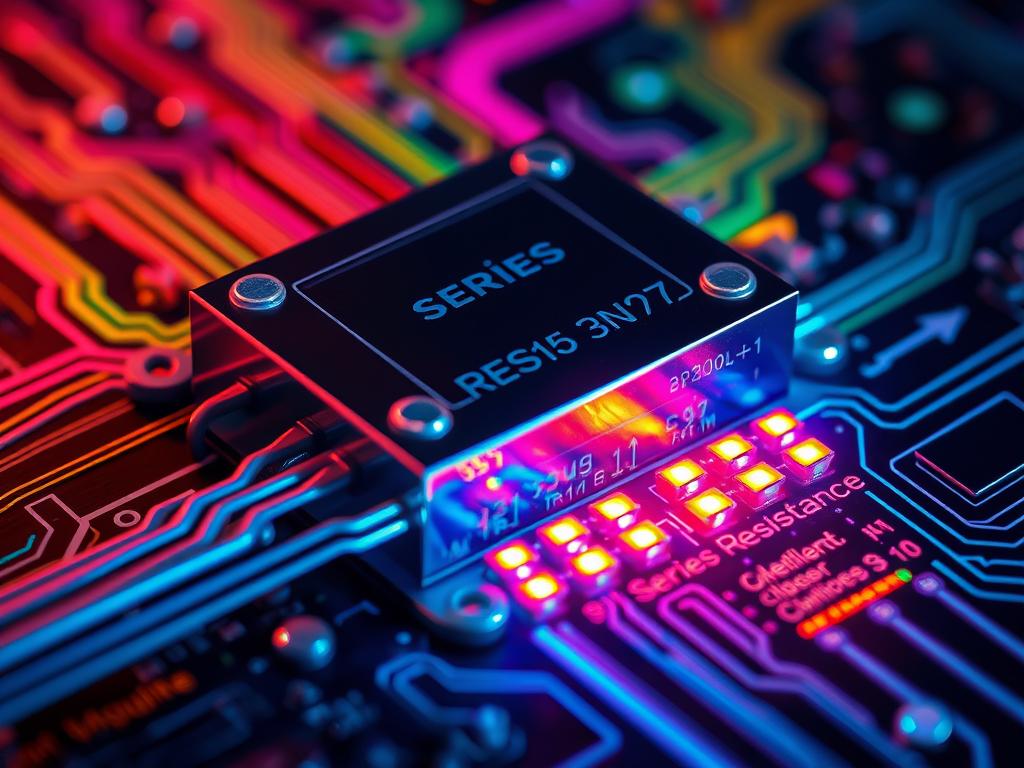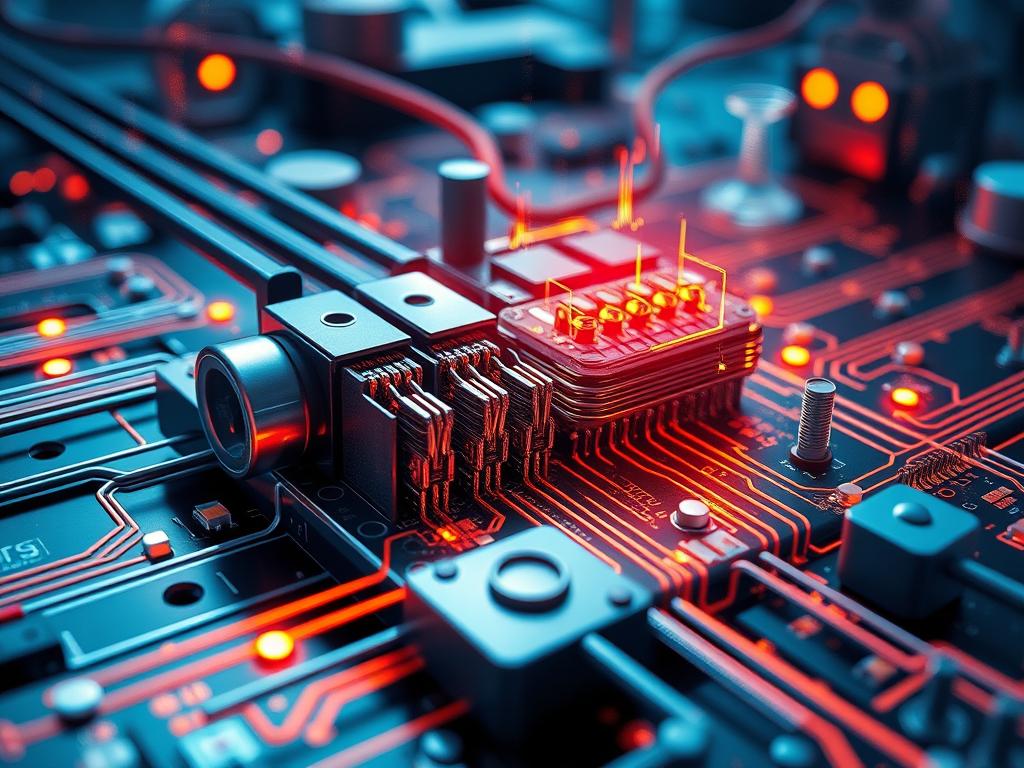Third-generation silicon-based solar cells dominate the market with impressive power conversion efficiencies. These cells achieve approximately 25–26% efficiency. Understanding series resistance extraction is crucial for optimizing performance and efficiency in semiconductor devices.
Series resistance extraction identifies and quantifies power losses at metal-semiconductor interfaces. This technique improves the performance of various semiconductor devices. It’s essential for solar cells and integrated circuits.
Analyzing IV characteristics is key in series resistance extraction. This examination helps pinpoint areas of energy loss. Researchers can then develop strategies to minimize these losses.
This process is vital for developing high-performance transistors and other components. Troubleshooting transistor circuits often relies on this technique.
Recent advancements introduced the concept of “shell” for carrier-selective passivating contacts. This innovative approach allows for precise investigation of losses in solar cells. It pushes the boundaries of efficiency and performance.
Series resistance extraction impacts device performance significantly. Various measurement techniques are used in this field. Researchers face challenges in this critical area of semiconductor study.
Understanding Series Resistance in Semiconductor Applications
Series resistance is crucial in semiconductor devices. It affects their performance and efficiency. This parameter extraction process is vital for device modeling and material characterization.
What is Series Resistance?
Series resistance is the opposition to electric current in semiconductor devices. It represents the resistance at metal-semiconductor interfaces where charge carriers move. Understanding this concept helps optimize device performance.
Importance in Metal-Semiconductor Contacts
Series resistance is significant in solar cells and transistors. In solar cells, area-normalized series resistance ranges from 0.5 Ωcm2 to 1.3 Ωcm2. This variation impacts the overall efficiency of these devices.
Effects on Device Performance
Series resistance affects device characteristics like current-voltage relationships and power output. In solar cells, it influences the fill factor, a key performance indicator. Researchers use equations to estimate its impact on solar cell power.
“Understanding and minimizing series resistance is essential for optimizing device performance and reducing power losses in semiconductor applications.”
Advanced tools like StarRC support various resistance extraction approaches. These include rule-based, mesh, and field solver methods. Such techniques are crucial for accurate parameter extraction in complex semiconductor geometries.
Techniques for Series Resistance Extraction
Series resistance extraction is vital in semiconductor metrology and electrical characterization. Engineers use various methods to find losses in metal-semiconductor contacts. These techniques help improve overall device performance.
Direct Measurement Methods
The Transfer Length Method (TLM) is a popular approach. It provides insights into charge-carrier transport in semiconductor interfaces. TLM measurements under variable illumination are useful for analyzing silicon heterojunction contact stacks.
Simulation-Based Approaches
TCAD simulations are another powerful tool for series resistance extraction. These models help identify key parameters affecting contact resistivity. By simulating TLM structures, researchers can improve device designs and process monitoring techniques.
The Role of Advanced Instrumentation
Cutting-edge instruments are crucial for accurate series resistance measurements. High-resolution analysis tools enable precise characterization of semiconductor interfaces. These tools support developments in electrical characterization methods.
| Measurement Type | Extracted RSD Value | Total On-Resistance |
|---|---|---|
| High Gate Overdrive | 32 Ω | 65 Ω |
| With 0 Ω External Resistance | Baseline | – |
| With 10 Ω External Resistance | Increased | – |
| With 20 Ω External Resistance | Further Increased | – |

These advanced techniques boost semiconductor metrology and process monitoring. By extracting accurate series resistance values, engineers can enhance device performance. This helps push the boundaries of semiconductor technology forward.
Real-World Applications of Series Resistance Extraction
Series resistance extraction is vital in semiconductor applications. It involves parameter extraction and material characterization. These processes optimize device performance across different sectors.
Impacts on Transistor Manufacturing
Series resistance extraction helps engineers improve transistor efficiency. A 2011 study showed a simple extraction method using two linear ID-VG measurements. This technique reduces power consumption and enhances transistor performance.
Implications for Integrated Circuits
Precise series resistance measurements are crucial for integrated circuits (ICs). IoT, image sensors, and MEMS have made IC designs more complex. Traditional extraction methods often fail to meet these new demands.
Advanced techniques like 2D fracturing are now used for accurate resistance calculations. These methods ensure efficient circuit operation and reliability.
Role in Photovoltaic Technology
Series resistance extraction is key to improving solar cell efficiency. It’s especially important for carrier-selective passivating contacts. The “shell” concept in solar cells aims to minimize electrical and optical losses.
Accurate resistance measurements are vital for optimizing energy conversion in solar cells.
| Application | Extraction Method | Key Benefit |
|---|---|---|
| Transistors | Linear ID-VG measurements | Reduced power consumption |
| Integrated Circuits | 2D fracturing technique | Improved circuit reliability |
| Solar Cells | Carrier-selective contact analysis | Enhanced energy conversion efficiency |
Accurate series resistance extraction becomes more crucial as semiconductor technology advances. It remains essential for improving electronic device performance. From transistors to solar cells, this process drives innovation in the field.
Challenges in Series Resistance Measurement
Measuring series resistance accurately is tough in semiconductor metrology. Many factors affect resistance in advanced CMOS devices. This makes device modeling and electrical characterization complex.
Variability in Material Properties
Material properties are key in series resistance measurements. Research shows classic fitting methods can underestimate mobility fluctuations. This is due to series resistance sensitivity.
Such variability affects low-frequency noise parameter extraction in devices like FinFETs. This makes accurate measurements even more challenging.
Temperature Dependence Issues
Temperature changes greatly affect series resistance measurements. Studies show drain current drops as external resistance rises in strong inversion. This makes device modeling and characterization tricky.

Influence of Contact Geometry
Contact geometry hugely impacts series resistance measurements. Contact size and shape influence measurement accuracy. In solar cells, various internal resistances cause distributed series resistance.
| Factor | Impact on Measurement | Challenge |
|---|---|---|
| Material Variability | Underestimation of mobility fluctuations | Inaccurate parameter extraction |
| Temperature Dependence | Drain current degradation | Complicated device modeling |
| Contact Geometry | Distributed series resistance | Varied internal resistances |
These issues call for advanced measurement techniques. Careful consideration of environmental factors during extraction is crucial. Semiconductor metrology keeps evolving to tackle these complexities.
Recent Innovations in Measurement Techniques
Series resistance extraction has made great strides lately. New methods have improved process monitoring and parameter extraction. This leads to more precise IV characteristics analysis.
Development of High-Resolution Techniques
High-resolution measurement methods are changing the game. The variable-illumination TLM technique offers deep insights into charge carrier transport. It improves our grasp of series resistance in complex semiconductor structures.
Advancements in Modeling Software
TCAD simulations have taken a big leap forward. They allow for more accurate prediction of device behavior. The integration of advanced modeling techniques with process monitoring boosts parameter extraction accuracy.
Emerging Technologies for Enhanced Accuracy
New tech aims to improve measurement accuracy in various conditions. For solar cells, maximum power point measurements are now crucial. These innovations help us better understand series resistance in photovoltaic applications.
| Innovation | Application | Impact on Accuracy |
|---|---|---|
| Variable-illumination TLM | Charge carrier transport analysis | High resolution insights |
| TCAD simulations | Device behavior prediction | Improved modeling accuracy |
| Maximum power point measurements | Solar cell performance analysis | Enhanced real-world data |
These advances have greatly improved series resistance extraction in semiconductor devices. High-resolution techniques, advanced modeling, and specialized measurements offer new insights. They open doors to better understanding and optimizing device performance.
Future Trends in Series Resistance Research
Series resistance research is rapidly evolving. New frontiers are emerging in material characterization and device modeling. Precise resistance measurements are becoming crucial in quantum devices.
The Shift Towards Quantum Devices
Quantum devices are challenging semiconductor metrology. These devices need ultra-precise resistance measurements. AlGaN/GaN HEMTs require high sheet carrier density and electron mobility.
These factors are vital for low on-resistance and high breakdown voltage. Advanced techniques are needed for accurate series resistance extraction in quantum devices.
Integrating AI for Enhanced Analysis
AI is set to transform data analysis in series resistance research. Machine learning can process complex datasets from multistep de-embedding methods. This improves accuracy in the submillimeter-wave range.
AI integration will enhance our understanding of parasitic components. It will also reveal their impact on RF characteristics.
Potential Industry Impacts and Solutions
Series resistance research has big implications for various industries. In solar cells, optimizing junction depth and sheet resistance can boost efficiency. A change from 0.87 μm to 0.60 μm in junction depth increased efficiency by 2.4%.
The United States Low Equivalent Series Resistance Capacitors market is growing. It’s projected to reach $1.6 Billion by 2030. This highlights the field’s increasing importance.
As we improve our understanding of series resistance, we’ll see more efficient devices. Advancements in renewable energy technologies are also expected.


